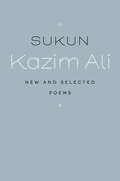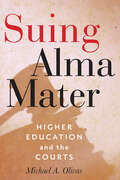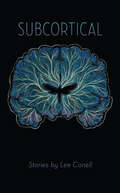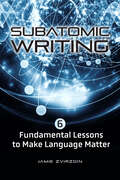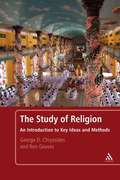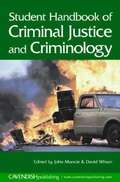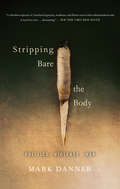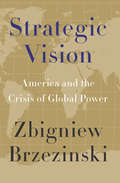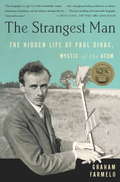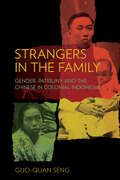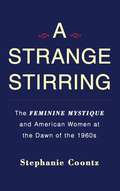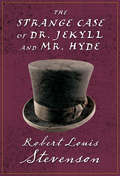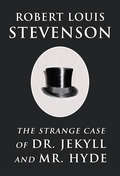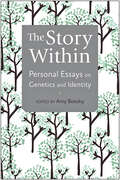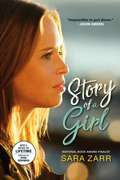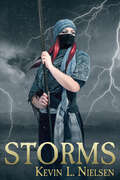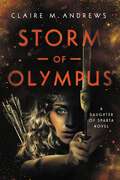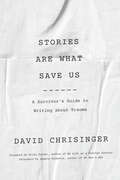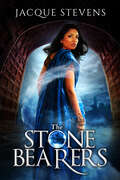- Table View
- List View
Sukun: New and Selected Poems (Wesleyan Poetry Series)
by Kazim DanielKazim Ali is a poet, novelist, and essayist whose work explores themes of identity, migration, and the intersections of cultural and spiritual traditions. His poetry is known for its lyrical and expressive language, as well as its exploration of themes such as love, loss, and the search for meaning in a rapidly changing world. "Sukun" means serenity or calm, and a sukun is also a form of punctuation in Arabic orthography that denotes a pause over a consonant. This Sukun draws a generous selection from Kazim's six previous full-length collections, and includes 35 new poems. It allows us to trace Ali's passions and concerns, and take the measure of his art: the close attention to the spiritual and the visceral, and the deep language play that is both musical and plain spoken.[sample poem]The Fifth PlanetCome, early summer in the mountains, and come, strawberry moon,and carry me softly in the silver canoe on wires to the summit, where in that way of late night useless talk, the bright dark asks me, "What is the thing you are most afraid of?" and I already know which lie I will tell.There were six of us huddled there in the cold, leaning on the rockslingering in the dark where I do not like to linger, looking up at thesharp round pinnacle of light discussing what shapes we saw—rabbit,man, goddess—but that brightness for me was haunted by no thing,no shadow at all in the lumens.What am I, what am I, I kept throwing out to the hustling silence.No light comes from the moon, he's just got good positioning and I suppose that's the answer, that's what I'm most afraid of,that I'm a mirror, that I have no light of my own, that I hang in empty spacein faithful orbit around a god or fatherneither of Whom will ever see me whole. I keep squinting to try to see Jupiterwhich the newspaper said would be found near the moon but it's nowhere, they must have lied. Or like god, there is too muchreflection, headsplitting and profane, scraping up every shadow,too much light for anyone to see.
Suing Alma Mater: Higher Education and the Courts
by Michael A. OlivasAlthough much has been written about U.S. Supreme Court decisions involving higher education, little has been said about the foundational case law and litigation patterns emerging from the lower courts. As universities become increasingly legislated, regulated, and litigious, campuses have become testing grounds for a host of constitutional challenges. From faculty and student free speech to race- or religion-based admissions policies, Suing Alma Mater describes the key issues at play in higher education law.Eminent legal scholar Michael A. Olivas considers higher education litigation in the latter half of the twentieth century and the rise of "purposive organizations," like the American Civil Liberties Union and the Alliance Defense Fund (now known as the Alliance Defending Freedom), that exist to advance litigation. He reviews more than 120 college cases brought before the Supreme Court in the past fifty years and then discusses six key cases in depth. Suing Alma Mater provides a clear-eyed perspective on the legal issues facing higher education today.
Suing Alma Mater: Higher Education and the Courts
by Michael A. OlivasAlthough much has been written about U.S. Supreme Court decisions involving higher education, little has been said about the foundational case law and litigation patterns emerging from the lower courts. As universities become increasingly legislated, regulated, and litigious, campuses have become testing grounds for a host of constitutional challenges. From faculty and student free speech to race- or religion-based admissions policies, Suing Alma Mater describes the key issues at play in higher education law.Eminent legal scholar Michael A. Olivas considers higher education litigation in the latter half of the twentieth century and the rise of "purposive organizations," like the American Civil Liberties Union and the Alliance Defense Fund (now known as the Alliance Defending Freedom), that exist to advance litigation. He reviews more than 120 college cases brought before the Supreme Court in the past fifty years and then discusses six key cases in depth. Suing Alma Mater provides a clear-eyed perspective on the legal issues facing higher education today.
Subcortical (Johns Hopkins: Poetry and Fiction)
by Lee ConellRecipient of the 2018 Story Prize Spotlight AwardLee Conell;€™s linguistically deft stories examine the permeability between the real and the imagined, the stories buried beneath the surface and the stories by which we live our lives. In the title story of this collection, a young woman who wants to become a doctor is manipulated by an older man into playing a role in one of his medical studies. In "The Lock Factory," winner of the Chicago Tribune;€™s 2016 Nelson Algren Literary Award, three women who assemble school combination locks are trapped inside an escalating generational conflict of their own making. A boy who has lost his mother in "The Rent-Controlled Ghost" searches for the spirit of the mistreated tenant who formerly inhabited his apartment. "A Magic Trick for the Recently Unemployed" serves as a three-step how-to guide for reclaiming a sense of self and purpose. In "What the Blob Said to Me," an elderly woman dwells on her long-ago experience working at a government production site for the atomic bomb. And a mother-daughter Groupon for an upscale afternoon tea goes seriously awry in "Mutant at the Pierre Hotel."With humor and verve, Subcortical;€™s dynamic stories delve into the mysteries of the human mind as these haunted characters struggle with economic disparity, educational divides, and the often-contested spaces in which they live.
Subcortical (Johns Hopkins: Poetry and Fiction)
by Lee ConellRecipient of the 2018 Story Prize Spotlight AwardLee Conell;€™s linguistically deft stories examine the permeability between the real and the imagined, the stories buried beneath the surface and the stories by which we live our lives. In the title story of this collection, a young woman who wants to become a doctor is manipulated by an older man into playing a role in one of his medical studies. In "The Lock Factory," winner of the Chicago Tribune;€™s 2016 Nelson Algren Literary Award, three women who assemble school combination locks are trapped inside an escalating generational conflict of their own making. A boy who has lost his mother in "The Rent-Controlled Ghost" searches for the spirit of the mistreated tenant who formerly inhabited his apartment. "A Magic Trick for the Recently Unemployed" serves as a three-step how-to guide for reclaiming a sense of self and purpose. In "What the Blob Said to Me," an elderly woman dwells on her long-ago experience working at a government production site for the atomic bomb. And a mother-daughter Groupon for an upscale afternoon tea goes seriously awry in "Mutant at the Pierre Hotel."With humor and verve, Subcortical;€™s dynamic stories delve into the mysteries of the human mind as these haunted characters struggle with economic disparity, educational divides, and the often-contested spaces in which they live.
Subatomic Writing: Six Fundamental Lessons to Make Language Matter
by Jamie ZvirzdinSee science writing fundamentals afresh through a subatomic lens!In Subatomic Writing, Johns Hopkins University instructor Jamie Zvirzdin goes bravely into uncharted territory by offering a totally new kind of guide for writing about science—from the subatomic level up! Subatomic Writing teaches readers that the building blocks of language are like particles in physics. These particles, combined and arranged, form something greater than their parts: all matter in the literary universe. The six levels of language covered in this guide create writing that illuminates and energizes the reader to feel, learn, change, and act. This interdisciplinary approach helps scientists, science writers, and editors improve their writing in fundamental areas as they build from the sounds in a word to the pacing of a paragraph. These areas include• Sound and sense• Word classes• Grammar and syntax• Punctuation• Rhythm and emphasis• Pacing and coherenceEqually helpful for students who need to learn how to write clearly about science and scientists who need to hone their writing skills to create more effective course material, papers, and grant applications, this guide builds confidence in writing abilities as old skills are taught in new, exciting ways. Each lesson provides exercises that build on each other, strengthening readers' capacity to communicate ideas and data, all while learning basic particle physics along the way.
Subatomic Writing: Six Fundamental Lessons to Make Language Matter
by Jamie ZvirzdinSee science writing fundamentals afresh through a subatomic lens!In Subatomic Writing, Johns Hopkins University instructor Jamie Zvirzdin goes bravely into uncharted territory by offering a totally new kind of guide for writing about science—from the subatomic level up! Subatomic Writing teaches readers that the building blocks of language are like particles in physics. These particles, combined and arranged, form something greater than their parts: all matter in the literary universe. The six levels of language covered in this guide create writing that illuminates and energizes the reader to feel, learn, change, and act. This interdisciplinary approach helps scientists, science writers, and editors improve their writing in fundamental areas as they build from the sounds in a word to the pacing of a paragraph. These areas include• Sound and sense• Word classes• Grammar and syntax• Punctuation• Rhythm and emphasis• Pacing and coherenceEqually helpful for students who need to learn how to write clearly about science and scientists who need to hone their writing skills to create more effective course material, papers, and grant applications, this guide builds confidence in writing abilities as old skills are taught in new, exciting ways. Each lesson provides exercises that build on each other, strengthening readers' capacity to communicate ideas and data, all while learning basic particle physics along the way.
The Study of Religion: An Introduction to Key Ideas and Methods (PDF)
by Ron Geaves George D. ChryssidesThis is a student introductory guide to the history and methodology of the study of religion. This new guide fulfils two main aims: to introduce the history and methodology pertaining to the study of religion (including ideas of key theorists) and to raise and discuss the main problems in current scholarship in world religions. Increasingly, recognition has been given to the importance of methodology in the study of religion, and, with justification, methodological issues are generally taught to first year students in order to equip them for systematic academic study of the topic. Unfortunately many of the theories that impinge on methodology are explained in a highly complex way, which even advanced students find it hard to understand. This book will unravel the complexity of these issues for students. In addition to theories relating to Religious Studies, examples will be drawn from a variety of the world's historical religious traditions, spanning the range of major ones and some minor ones. The student will in this way gain some understanding of the fundamental ideas of the world's religions as well as an introduction to methods of study. Alternative ISBNs 9780826464484 9781780937007 9781780938400 9781780936703 9781472567321
Student Handbook of Criminal Justice and Criminology (Student edition) (PDF)
by John Muncie David WilsonThis new title is a 'one-stop shop' for those who teach, study or are interested in criminology and the criminal justice systems of the UK. Written by some of the leading criminologists in the country, The Handbook is accessible and reader-friendly, guiding the user through summaries, key terms and key readings. To help those who teach criminal justice or criminology, seminar topics are suggested at the conclusion of each chapter. The Handbook is a critical introduction and as such considers contemporary issues in criminal justice, focusing on conceptions of crime and conflict resolutions, as well as introducing the reader to researching criminal justice. It discusses crime and criminology in relation to the media, race, Islam, gender and politics, and considers all the relevant theoretical debates that dominate criminology. Chapters on the police, courts, probation and prisons are included, along with more theoretical chapters regarding crime prevention, youth justice, and restorative and informal justice. The Handbook also includes comparative materials and international criminal courts.
Stripping Bare the Body: Politics Violence War
by Mark DannerFor the past two decades, Mark Danner has reported from Latin America, Haiti, the Balkans, and the Middle East. His perceptive, award-winning dispatches have not only explored the real consequences of American engagement with the world, but also the relationship between political violence and power. In Stripping Bare the Body, Danner brings together his best reporting from the world's most troubled regions-from the fall of the Duvalier dictatorship in Haiti to the tumultuous rise of Aristide; from the onset of the Balkan Wars to the painful fragmentation of Yugoslavia; and finally to the disastrous invasion of Iraq and the radical, destructive legacy of the Bush administration.At a time when American imperial power is in decline, there has never been a more compelling moment to read these urgent, fiercely intelligent reports.
Stripping Bare the Body: Politics Violence War
by Mark DannerFor the past two decades, Mark Danner has reported from Latin America, Haiti, the Balkans, and the Middle East. His perceptive, award-winning dispatches have not only explored the real consequences of American engagement with the world, but also the relationship between political violence and power. In Stripping Bare the Body, Danner brings together his best reporting from the world's most troubled regions -- from the fall of the Duvalier dictatorship in Haiti to the tumultuous rise of Aristide; from the onset of the Balkan Wars to the painful fragmentation of Yugoslavia; and finally to the disastrous invasion of Iraq and the radical, destructive legacy of the Bush administration. At a time when American imperial power is in decline, there has never been a more compelling moment to read these urgent, fiercely intelligent reports.
Strategic Vision: America and the Crisis of Global Power
by Zbigniew BrzezinskiEminent scholar Zbigniew Brzezinski's New York Times bestselling blueprint for American foreign policy strategy in the twenty-first centuryThe world today faces a crisis of power, caused by the dramatic shift in its center of gravity from the West to the East, by the dynamic political awakening of people worldwide, and by the deterioration of America's performance both domestically and internationally. As a result, America's position as a world superpower is far from secure.In Strategic Vision, former National Security Advisor Zbigniew Brzezinski argues that America can and should be actively engaged in navigating this period of crisis and provides a strategic blueprint for America to revitalize its global status and promote a peaceful twenty-first century. As Brzezinski eloquently shows, without an America that is economically vital, socially appealing, responsibly powerful, and capable of sustaining an intelligent foreign engagement, the geopolitical prospects for the West could become increasingly grave.
The Strangest Man: The Hidden Life of Paul Dirac, Mystic of the Atom
by Graham FarmeloPaul Dirac was among the great scientific geniuses of the modern age. One of the discoverers of quantum mechanics, the most revolutionary theory of the past century, his contributions had a unique insight, eloquence, clarity, and mathematical power. His prediction of antimatter was one of the greatest triumphs in the history of physics. One of Einstein&’s most admired colleagues, Dirac was in 1933 the youngest theoretician ever to win the Nobel Prize in physics.Dirac&’s personality is legendary. He was an extraordinarily reserved loner, relentlessly literal-minded and appeared to have no empathy with most people. Yet he was a family man and was intensely loyal to his friends. His tastes in the arts ranged from Beethoven to Cher, from Rembrandt to Mickey Mouse.Based on previously undiscovered archives, The Strangest Man reveals the many facets of Dirac&’s brilliantly original mind. A compelling human story, The Strangest Man also depicts a spectacularly exciting era in scientific history.
Strangers in the Family: Gender, Patriliny, and the Chinese in Colonial Indonesia
by Guo-Quan SengIn Strangers in the Family, Guo-Quan Seng provides a gendered history of settler Chinese community formation in Indonesia during the Dutch colonial period (1816–1942). At the heart of this story lies the creolization of patrilineal Confucian marital and familial norms to the colonial legal, moral, and sexual conditions of urban Java. Departing from male-centered narratives of Ooverseas Chinese communities, Strangers in the Family tells the history of community- formation from the perspective of women who were subordinate to, and alienated from, full Chinese selfhood. From native concubines and mothers, creole Chinese daughters, and wives and matriarchs, to the first generation of colonial-educated feminists, Seng showcases women's moral agency as they negotiated, manipulated, and debated men in positions of authority over their rights in marriage formation and dissolution. In dialogue with critical studies of colonial Eurasian intimacies, this book explores Asian-centered inter-ethnic patterns of intimate encounters. It shows how contestations over women's place in marriage and in society were formative of a Chinese racial identity in colonial Indonesia.
A Strange Stirring: The Feminine Mystique and American Women at the Dawn of the 1960s
by Stephanie CoontzIn 1963, Betty Friedan unleashed a storm of controversy with her bestselling book, The Feminine Mystique. Hundreds of women wrote to her to say that the book had transformed, even saved, their lives. Nearly half a century later, many women still recall where they were when they first read it.In A Strange Stirring, historian Stephanie Coontz examines the dawn of the 1960s, when the sexual revolution had barely begun, newspapers advertised for "perky, attractive gal typists,” but married women were told to stay home, and husbands controlled almost every aspect of family life. Based on exhaustive research and interviews, and challenging both conservative and liberal myths about Friedan, A Strange Stirring brilliantly illuminates how a generation of women came to realize that their dissatisfaction with domestic life didn't reflect their personal weakness but rather a social and political injustice.
The Strange Case of Dr. Jekyll and Mr. Hyde
by Robert Louis StevensonRespected scientist Dr. Jekyll develops a potion that transforms him into his alter ego, the depraved Mr. Hyde, who indulges in acts of lust and brutality. Both a page-turner and an exploration of good and evil, The Strange Case of Dr. Jekyll and Mr. Hyde is one of the best-known stories in all of literature. This short novel, first published in 1886, is the definition of a classic.
The Strange Case of Dr. Jekyll and Mr. Hyde
by Robert Louis StevensonRespected scientist Dr. Jekyll develops a potion that transforms him into his alter ego, the depraved Mr. Hyde, who indulges in acts of lust and brutality. Both a page-turner and an exploration of good and evil, The Strange Case of Dr. Jekyll and Mr. Hyde is one of the best-known stories in all of literature. This short novel, first published in 1886, is the definition of a classic.
The Story Within: Personal Essays on Genetics and Identity
by Amy BoeskyThe contributors to The Story Within share powerful experiences of living with genetic disorders. Their stories illustrate the complexities involved in making decisions about genetic diseases: whether to be tested, who to tell, whether to have children, and whether and how to treat children medically, if treatment is available. More broadly, they consider how genetic information shapes the ways we see ourselves, the world, and our actions within it. People affected by genetic disease respond to such choices in varied and personal ways. These writers reflect that breadth of response, yet they share the desire to challenge a restricted sense of what "health" is or whose life has value. They write hoping to expand conversations about genetics and identity—to deepen debate and generate questions. They or their families are affected by Huntington’s disease, Alzheimer’s disease, cancer, genetic deafness or blindness, schizophrenia, cystic fibrosis, Tay-Sachs, hypertrophic cardiomyopathy, fragile X, or Fanconi anemia. All of their stories remind us that genetic health is complicated, dynamic, and above all, deeply personal.ContributorsMisha Angrist, Amy Boesky, Kelly Cupo, Michael Downing, Clare Dunsford, Mara Faulkner, Christine Kehl O’Hagan, Charlie Pierce, Kate Preskenis, Emily Rapp, Jennifer Rosner, Joanna Rudnick, Anabel Stenzel (deceased), Isabel Stenzel Byrnes, Laurie Strongin, Patrick Tracey, Alice Wexler
The Story Within: Personal Essays on Genetics and Identity
by Amy BoeskyThe contributors to The Story Within share powerful experiences of living with genetic disorders. Their stories illustrate the complexities involved in making decisions about genetic diseases: whether to be tested, who to tell, whether to have children, and whether and how to treat children medically, if treatment is available. More broadly, they consider how genetic information shapes the ways we see ourselves, the world, and our actions within it. People affected by genetic disease respond to such choices in varied and personal ways. These writers reflect that breadth of response, yet they share the desire to challenge a restricted sense of what "health" is or whose life has value. They write hoping to expand conversations about genetics and identity—to deepen debate and generate questions. They or their families are affected by Huntington’s disease, Alzheimer’s disease, cancer, genetic deafness or blindness, schizophrenia, cystic fibrosis, Tay-Sachs, hypertrophic cardiomyopathy, fragile X, or Fanconi anemia. All of their stories remind us that genetic health is complicated, dynamic, and above all, deeply personal.ContributorsMisha Angrist, Amy Boesky, Kelly Cupo, Michael Downing, Clare Dunsford, Mara Faulkner, Christine Kehl O’Hagan, Charlie Pierce, Kate Preskenis, Emily Rapp, Jennifer Rosner, Joanna Rudnick, Anabel Stenzel (deceased), Isabel Stenzel Byrnes, Laurie Strongin, Patrick Tracey, Alice Wexler
Story of a Girl (Little Brown Novels)
by Sara ZarrNow a movie on Lifetime! I was thirteen when my dad caught me with Tommy Webber in the back of Tommy's Buick, parked next to the old Chart House down in Montara at eleven o'clock on a Tuesday night. Tommy was seventeen and the supposed friend of my brother, Darren.I didn't love him.I'm not sure I even liked him.In a moment, Deanna Lambert's teenage life is changed forever. Struggling to overcome the lasting repercussions and the stifling role of "school slut," Deanna longs to escape a life defined by her past. With subtle grace, complicated wisdom, and striking emotion, Story of a Girl reminds us of our human capacity for resilience, epiphany, and redemption.
Storms
by Kevin L. NielsenThis sequel to the bestselling Sands takes readers outside the desert that has Lhaurel's whole world and into a land with far more powerful and dangerous people than anything they could have imagined.
Storm of Olympus (Daughter of Sparta #3)
by Claire AndrewsThe heart-pounding conclusion to the Daughter of Sparta series forces Daphne to face her past, her deepest fears, and an enemy who can defeat even the all-powerful gods of Olympus in this epic reimagining of classic Greek mythology, for fans of Circe. After fighting in the Trojan War against her own people, Daphne is plagued by memories of her family, of her shortcomings, of her lover, Apollo, and of the secrets he and the gods keep. As she reels from the horrendous sacrifice she had to make and her own failure in the battle for Troy, she knows the Titans are out there—just beyond the island of Aeaea where she has taken refuge—raging a war against the world. As Daphne struggles to regain her will to fight as well as rein in the new abilities that have been thrust upon her, the gods call for her help once more. But it has been prophesized that she will bring about the ruin of Olympus and the downfall of Sparta, just as she caused the destruction of Troy. Now, as she begins to witness her terrible destiny coming true, she must become a hero to rival those of myth and save the gods, her people, and the world. Or she will watch it all burn around her. Claire M. Andrews has crafted a jaw-dropping conclusion to an epic series that gives women a powerful place among Greek mythology, flipping the world of gods and goddesses on its head. This breakneck race to the finish will have readers devouring its pages late into the night with one mind blowing twist after another, in a finale fit for a heroine who rivals any Ancient Greek hero.
Stories Are What Save Us: A Survivor's Guide to Writing about Trauma
by David ChrisingerA seasoned writer and teacher of memoir explores both the difficulties inherent in writing about personal trauma and the techniques for doing so in a compelling way.Since 2013, David Chrisinger has taught military veterans, their families, and other trauma survivors how to make sense of and recount their stories of loss and transformation. The lessons he imparts can be used by anyone who has ever experienced trauma, particularly people with a deep need to share that experience in a way that leads to connection and understanding. In Stories Are What Save Us, Chrisinger shows—through writing exercises, memoir excerpts, and lessons he's learned from his students—the most efficient ways to uncover and effectively communicate what you've learned while fighting your life's battles, whatever they may be. Chrisinger explores both the difficulties inherent in writing about personal trauma and the techniques for doing so in a compelling way. Weaving together his journey as a writer, editor, and teacher, he reveals his own deeply personal story of family trauma and abuse and explains how his life has informed his writing. Part craft guide, part memoir, and part teacher's handbook, Stories Are What Save Us presents readers with a wide range of craft tools and storytelling structures that Chrisinger and his students have used to process conflict in their own lives, creating beautiful stories of growth and transformation. Throughout, this profoundly moving, laser-focused book exemplifies the very lessons it strives to teach. A foreword by former soldier and memoirist Brian Turner, author of My Life as a Foreign Country, and an afterword by military wife and memoirist Angela Ricketts, author of No Man's War: Irreverent Confessions of an Infantry Wife, bookend the volume.
Stories Are What Save Us: A Survivor's Guide to Writing about Trauma
by David ChrisingerA seasoned writer and teacher of memoir explores both the difficulties inherent in writing about personal trauma and the techniques for doing so in a compelling way.Since 2013, David Chrisinger has taught military veterans, their families, and other trauma survivors how to make sense of and recount their stories of loss and transformation. The lessons he imparts can be used by anyone who has ever experienced trauma, particularly people with a deep need to share that experience in a way that leads to connection and understanding. In Stories Are What Save Us, Chrisinger shows—through writing exercises, memoir excerpts, and lessons he's learned from his students—the most efficient ways to uncover and effectively communicate what you've learned while fighting your life's battles, whatever they may be. Chrisinger explores both the difficulties inherent in writing about personal trauma and the techniques for doing so in a compelling way. Weaving together his journey as a writer, editor, and teacher, he reveals his own deeply personal story of family trauma and abuse and explains how his life has informed his writing. Part craft guide, part memoir, and part teacher's handbook, Stories Are What Save Us presents readers with a wide range of craft tools and storytelling structures that Chrisinger and his students have used to process conflict in their own lives, creating beautiful stories of growth and transformation. Throughout, this profoundly moving, laser-focused book exemplifies the very lessons it strives to teach. A foreword by former soldier and memoirist Brian Turner, author of My Life as a Foreign Country, and an afterword by military wife and memoirist Angela Ricketts, author of No Man's War: Irreverent Confessions of an Infantry Wife, bookend the volume.
The Stone Bearers
by Jacque StevensIn a fantastic world of magic and mythical creatures, fifteen-year-old Ashira desperately seeks to add some excitement and romance to her dull destiny. Fans of fairy tales and Greek mythology will love Jacque Stevens&’s The Stone Bearers.
